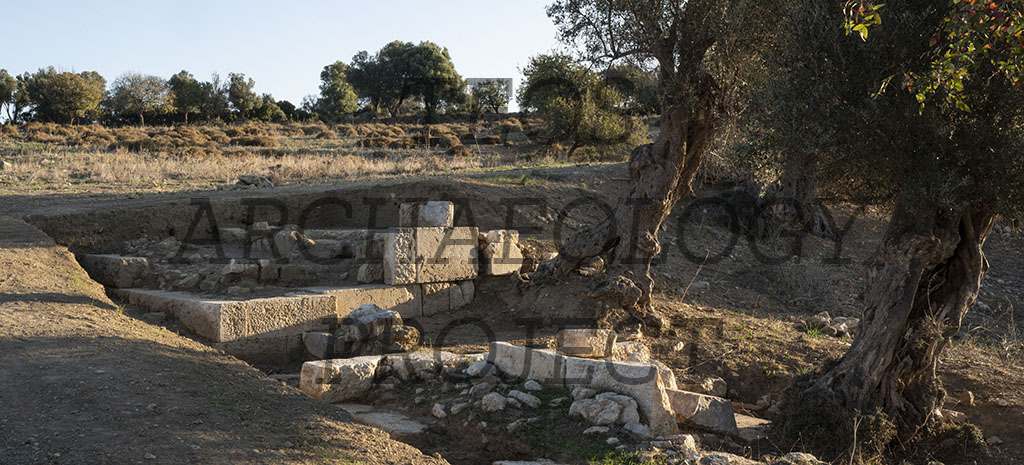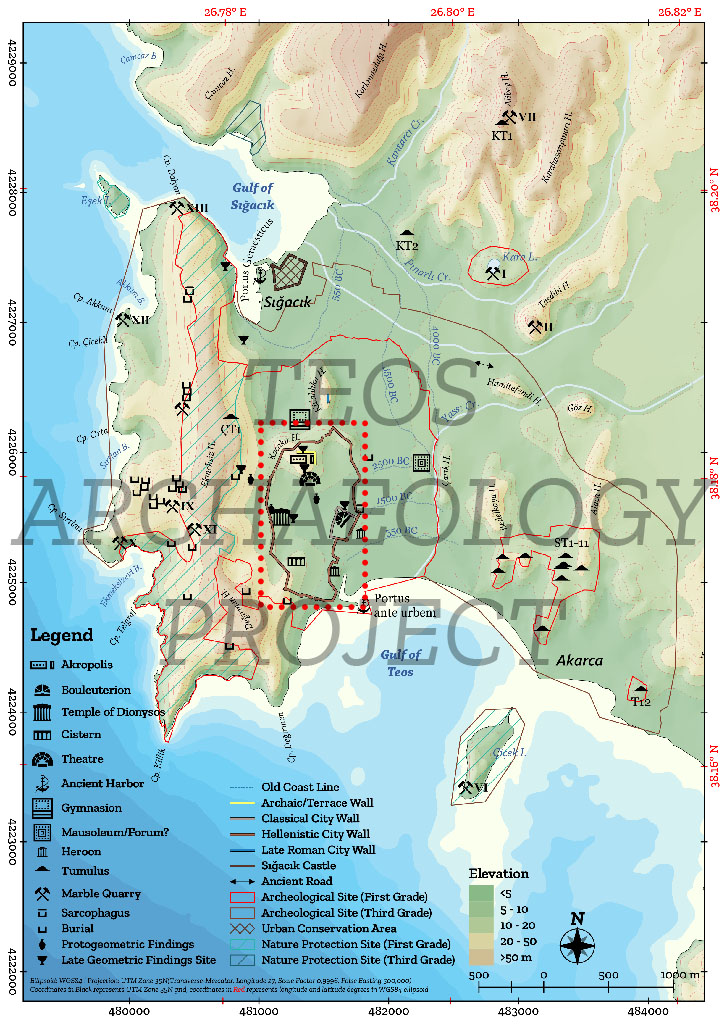
Herodotus Gate from Southwest (Kadıoğlu, 2021, 162, Figure 57)
Since 2010, the focus of the research has been put on the fortification walls. Geophysical prospections have been carried out to identify the unknown stretches of the city wall, as well as the gates and towers; numerous trenches were subsequently opened to confirm the geophysics results. These studies have made it possible for the first time to accurately determine the circuit and length of the Hellenistic Wall, which completely encircled the city. The wall was c. 3.8 km long and encircled an area of 65 hectares; it passed to the north of the Acropolis, west of the Sanctuary of Dionysus and the Roman cistern, east of the agora and continued southwards to the South Harbour Pier.
Current researches have revealed that the western, southern, and northern walls are supported by square towers, and that the city was accessed via gates located along the western, southern, eastern and northern walls. At the end of the 2020 season, a total of twelve towers, one to the north, nine to the west (6.4-12), and three to the south (6.1-3), as well as four gates, three to the west (Herodotus Gate, Dionysus Gate 1, Dionysus Gate 2) and one to the south (South Necropolis Gate), had been identified. Like in the southwest corner (6.4), the wall was probably supported by towers on the other corners as well.

Archaeological map of Teos and its surroundings (Kadıoğlu, 2021, 25, Map 4)
